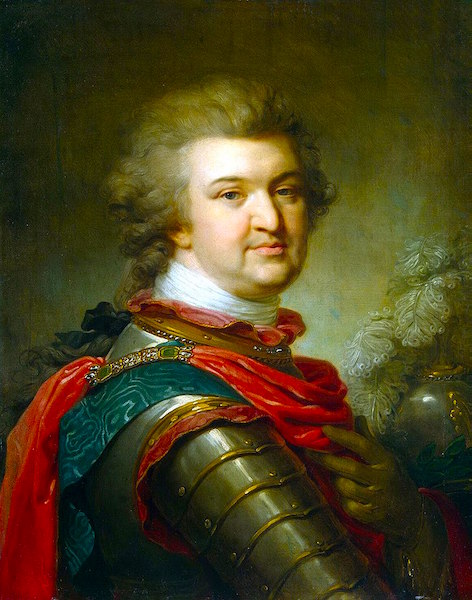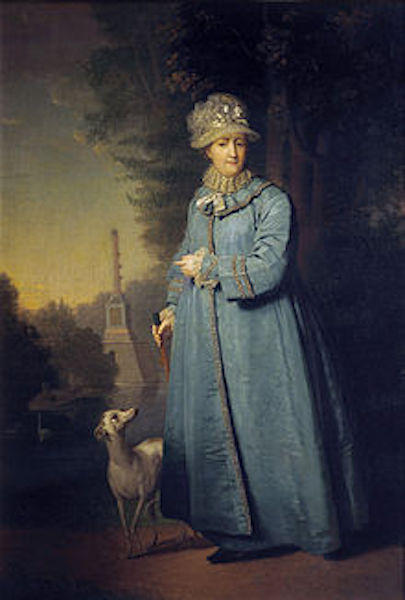It was on this day (11 October) in 1739 that Grigory Potemkin, future lover and perhaps secret husband of Catherine the Great, was born. His name has lived on in popular parlance mainly thanks to the “Potemkin village,” which has obscured his true achievements.

Grigory Potemkin painted late in life by Johann Baptist von Lampi the Elder. Credit: Wikipedia.
Born in the provinces into a petty noble family, Potemkin first attracted Catherine’s notice during the coup in 1762 that brought her to the throne. Appearing on horseback and in uniform before a guards regiment, the story goes, Catherine found herself unable to take the salute properly because she was without a sword. The young Potemkin saw her difficulty and spurred forward to offer her his own sword. He evidently made an impression because she singled him out for promotion and reward throughout the next decade while she was still with Grigory Orlov, and then briefly with a handsome dullard named Vassilchikov.
It wasn’t until 1774 that Catherine and the decade-younger Potemkin, who had in the meantime lost an eye but covered himself in glory during the First Russo-Turkish War, became lovers. Catherine was completely besotted with him. Her previous loves had been handsome men, but not quite up to her level of intellect and energy. Potemkin was more than able to keep up with her. After a few years, their exclusive sexual relationship ended, but they remained intimate friends — so much so, in fact, that Potemkin helped her select and manage her subsequent, ever-younger, favourites.
Potemkin was appointed Governor-General of the newly conquered southern provinces, with sweeping powers that made him virtually Catherine’s co-ruler. He immediately set about developing the new lands. He organized provincial administration, established towns and cities, founded educational institutions, promoted agriculture, and, most importantly, built the Black Sea fleet. This fleet helped Russia conquer Crimea in 1783. The ancient name for Crimea was Taurida, which was the origin of the new title that Catherine created for her dearest friend and most important advisor: Prince of Taurus.
Catherine’s biographers remain divided on the question of whether she married Potemkin. If she did, it was done secretly. If she didn’t, it hardly matters. They were evidently partners in every way.

Catherine the Great a few years before her death. Credit: Wikipedia.
Potemkin died of a fever at Jassy, which is now in Romania, in 1791, having successfully integrated the new southern provinces into the Russian empire. And the Potemkin villages? Their number and importance has probably been exaggerated. According to the Wikipedia article on Potemkin, historians have only been able to verify their existence in 2 locations during Catherine’s tour of the south in 1787.
Did you know that Versailles Century has both a Facebook page and an Instagram gallery (@versailles_century)? Please ‘like’ and follow!

















Leave a Comment